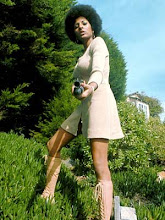
To watch it on film, is to relive those days of youth, when the world was full of promise. Here we have three instances of frisking on film. The first one comes from Quick (1993), a Rick King vehicle for hottie actress Teri Polo, who plays here the role of the title character, a paid assassin hired to eliminate a mob accountant, played by nerdy actor Martin Donovan. This scene takes place when Quick (Polo) visits the lair of mob kingpin Robert Davi, and a lucky bit-player gets to frisk her with evident gusto. Unfortunately, the search is interrupted precisely when he tries to reach for miss Polo’s breasts.


It is more or less a staple (more implied than explicit) of action vehicles starring hot young female leads. In Fathom (1967) sexy spy Raquel Welch must expose her breasts to the villain (making us wish she’d do it for the audience as well) in order to assure him she’s not carrying concealed weapons. And in the Ginger series of films, Cheri Caffaro is subjected to several body searches, despite her skimpy outfits.
Let us now turn to Double Impact (1991), Sheldon Lettich’s classic double dose of Van Damme action. Here, the frisking (purred deliciously by Corinna Everson, just seconds before she pushes hot Alonna Shaw – in her first screen role – against a sceptic office wall) is pure sexual innuendo. Danielle Wild (Shaw) works for the bad guys, but she’s soon converted to the cause of good and starts helping twin brothers Alex and Chad (both Van Damme), taking advantage of her position inside the organization. She’s surprised by badass mama Kara while searching through the archive files, and gets frisked in a steamy if short scene. Kara finishes by asking: “Now, do you want to frisk me?”


In both these situations it’s well in evidence the sexual nature of the frisking. When you dwell in a lawless environment, what would be a police procedure turns into wish-fulfilling abuse. That the search for concealed weapons is in most instances no more than an excuse for groping (with all the implied relations of power) the female body (the opposite is far more unusual) is made blatantly clear in this scene, taken from Alan Robert’s Karate Cop (1991).
In this scene, all the viewers’ expectations are played with in a savvy, tongue in cheek approach. When Rachel (Carrie Chambers), the heroine of this post-apocalyptic sci-fi actioneer, is taken by Snaker’s (Michael Bristow) henchmen and held in restraint, incapable of resistance, the über villain, played with campy aplomb by Mr. Bristow, when enraged by her defiance, wants to know: “Has anyone searched her for hidden weapons?”
And gladly proceeds to do it himself. Knowing what the audience expects – confessing the fact that the “search” is merely a pretext for sexual groping – he does it theatrically, in a precise three-step rhythm, closing his paws on Ms. Chambers’ hips, waist and finally, breasts. He doesn’t even pretend to be trying to find any weapon. It’s the sexual innuendo taken into solid affirmation of power.




And the expression on Rachel's face is pure bliss for us sick viewers. («I'd rather have sex with a warthog.» « That can be arranged.»)
(I must apologise for the poor quality of the Quick and Karate Cop stills, but they were taken from some old VHS copies from my own personal collection).




